We typically only want to see white in our yards because of snow. It can be disheartening to see discolored patches of grass after working so hard to keep it maintained. If you're wondering what causes grass to turn white, you've come to the right place. We've done the research and can tell you what could be turning your grass white.
Your grass could have a disease like powdery mildew or gray snow mold. Mesotrione, an organic compound in herbicides, can also turn grass white.
Grass can also turn white because of stress. Overcutting, undercutting, or underwatering your lawn can make it appear lighter than it should.
Having a discolored lawn can feel disheartening. Thankfully, there's still hope to remedy it. Keep reading to learn more about what causes white grass, how to fix it, and more important information!
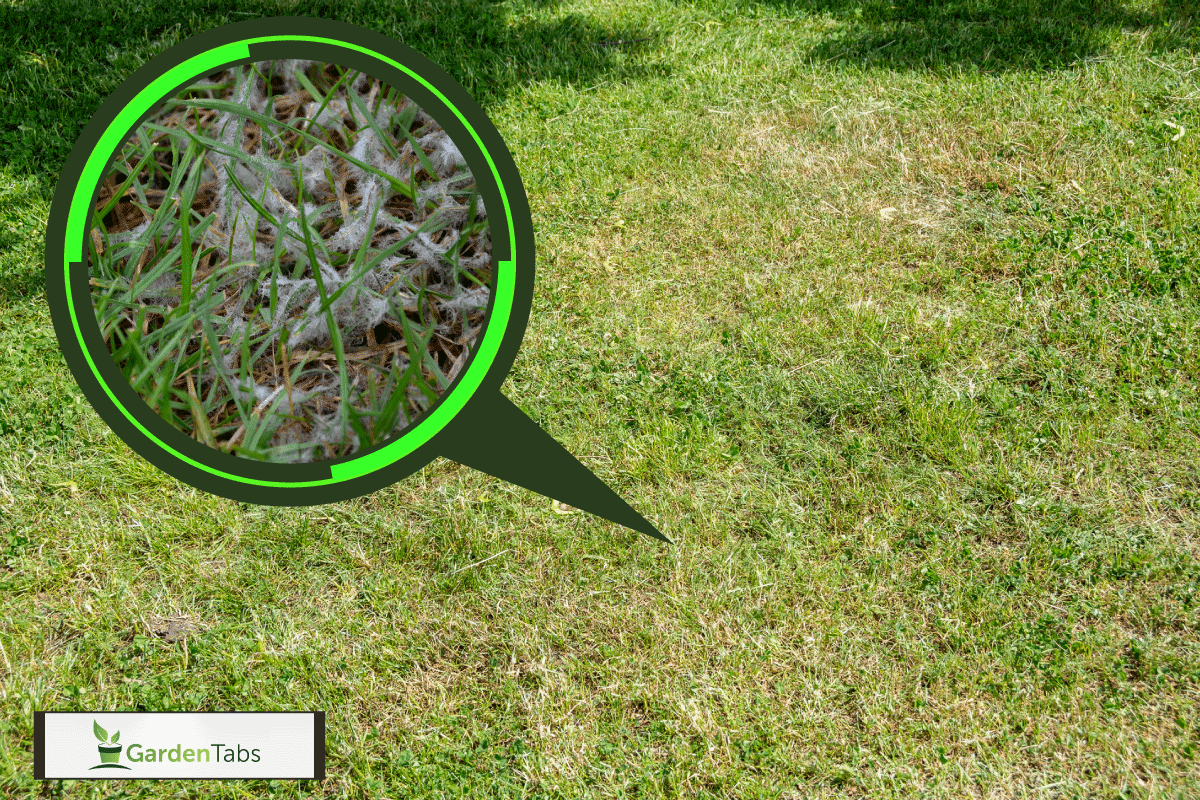
Causes Of White Grass
Here we'll talk more about what might be causing your grass to turn white.
Powdery Mildew
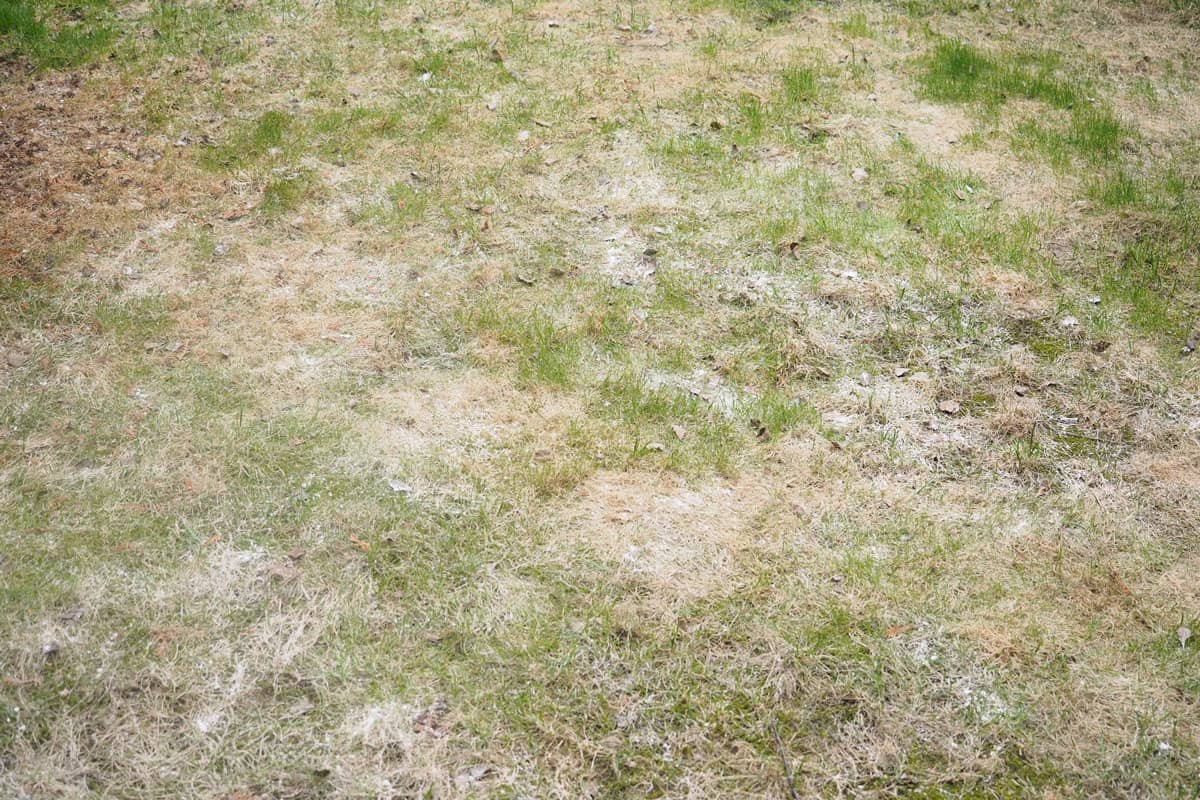
Powdery mildew is one of the most common reasons for grass to turn white. Thankfully, this fungal disease is distinct and easy to recognize. Grass infected by powdery mildew will look like it's been dusted in flour.
You're most likely to find grass infected by this disease in shady areas. Your lawn will also be more susceptible if there is a high amount of nitrogen in the soil.
Powdery mildew is most likely to occur on days with high humidity and temperatures between 60 degrees Fahrenheit and 70 degrees Fahrenheit.
Gray Snow Mold
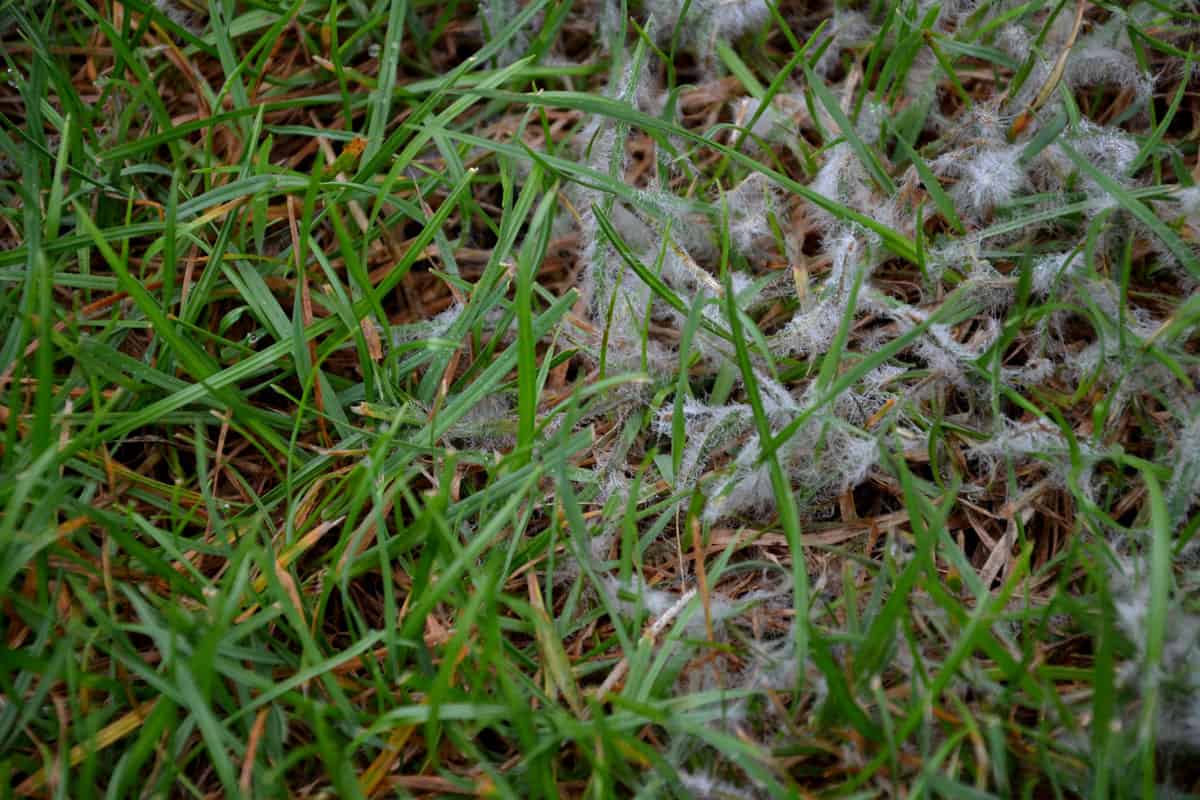
Gray snow mold is another fungal disease that can change your lawn's color. You'll first notice this disease as the snow begins to melt. There will be patches of white and gray throughout your grass.
There will need to be snow coverage for at least 60 days for this disease to occur. Gray snow mold will be more severe when the ground remains unfrozen before being covered in snow. Mulch can also help the mold spread.
Gray snow mold is most prevalent in lawns with high nitrogen levels. You're also more likely to see it in the spring if your grass was long before being covered in snow.
Herbicides
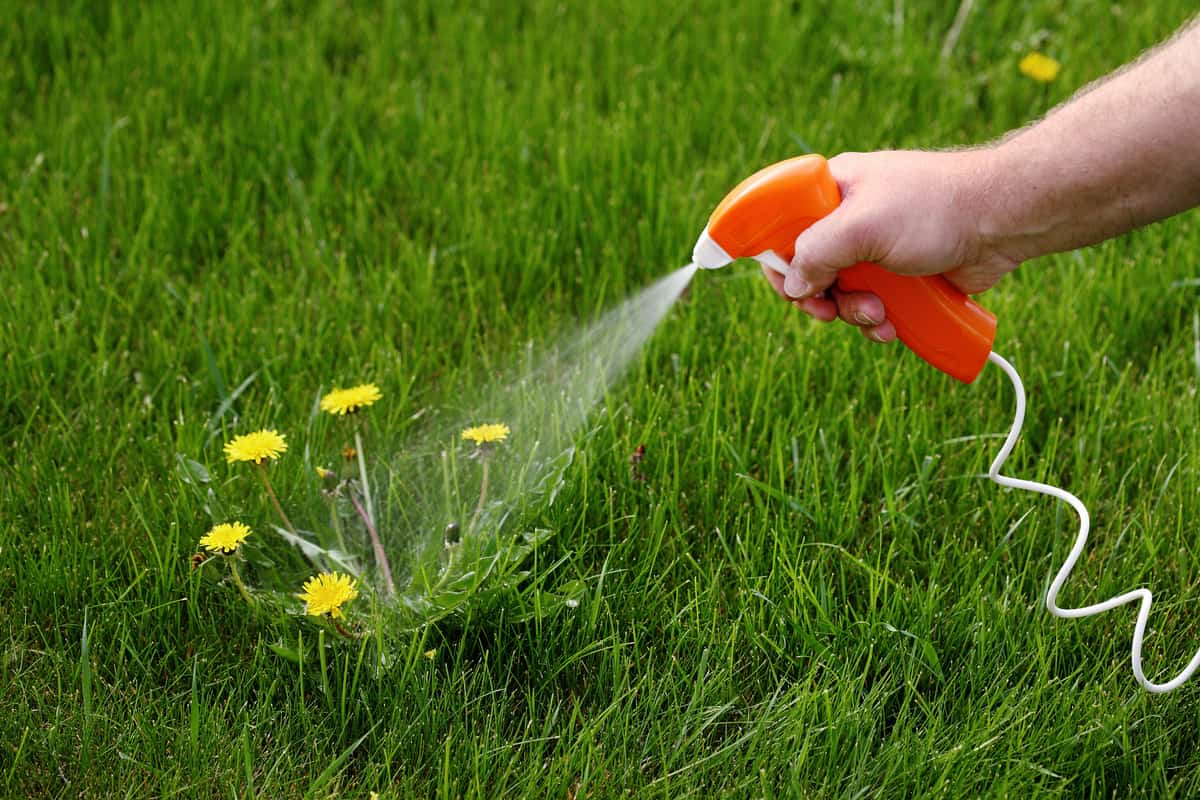
Mesotrione is an organic compound that's frequently found in selective herbicides. Selective herbicides work to kill specific types of plants, like weeds.
Mesotrione blocks an enzyme within plants. This enzyme is crucial in making chlorophyll. As the chlorophyll in the plant drops, its leaves will lose color, making them appear white.
Some common brands of herbicides that contain this compound include those listed below.
- Tenacity
- Callisto
- Meristo
- Instigate
Grass affected by mesotrione will lose its color after about a week. After that, as long as you have the correct grass, it will recover in three to four weeks.
Some grasses are sensitive to these treatments. Bermudagrass, bentgrass, and Poa annua are examples of plants that shouldn't be treated with this type of herbicide.
Improper Lawn Care
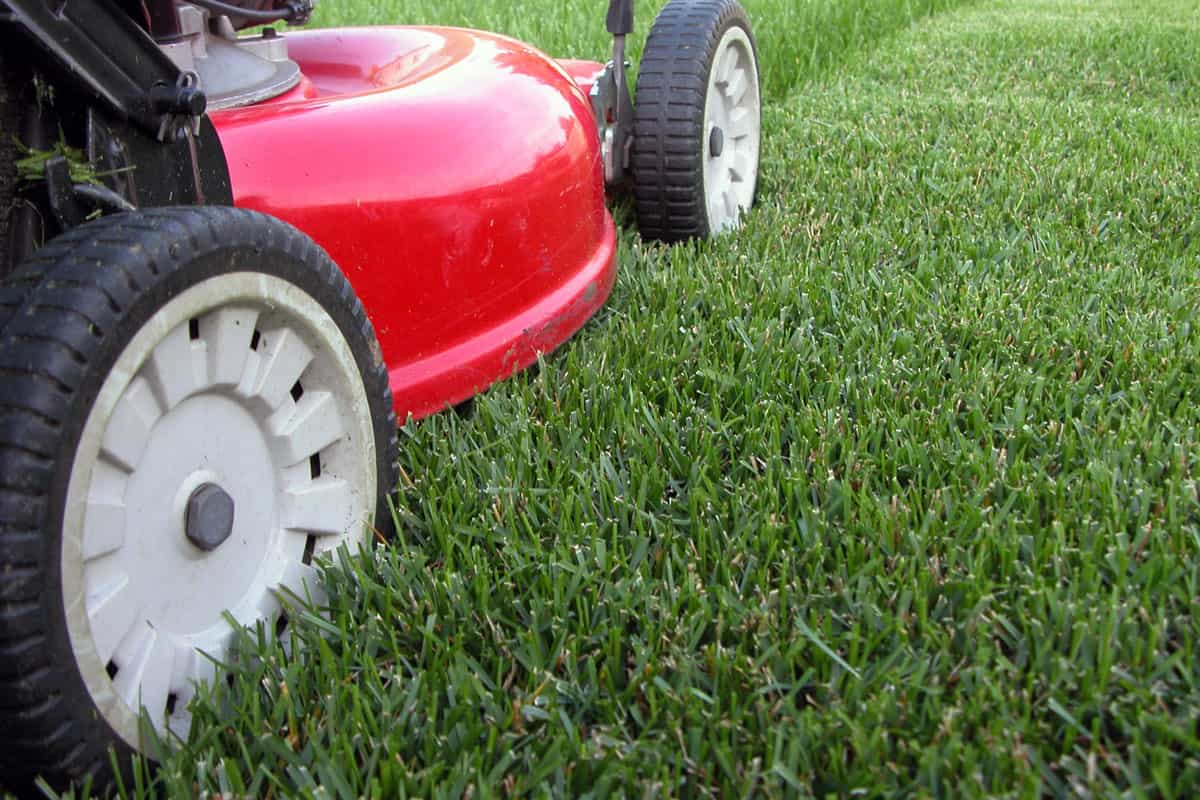
When plants are stressed, their typical appearance will change. The same is true for your grass. Overcutting or underwatering your lawn can cause yellow or white areas of grass.
How To Fix White Grass
While frustrating, it's still possible to get white grass back to a beautiful green. The key is to create a more suitable environment for your grass. This will lessen the chances of repeated instances of diseases or stress.
Fixing Lawn Diseases
Thankfully, gray snow mold is less severe than pink snow mold. The damage done to your grass will be mostly cosmetic, and it should recover on its own. If snow mold is a repeated problem, you can also try applying a preventative fungicide before the first snowfall.
Powdery mildew can be controlled and lessened by using special fungicides. However, the problem will continue to happen if you don't improve the growing conditions for the grass.
Check out this disease preventative on Amazon.
Check out this powdery mildew treatment on Amazon.
How Do You Prevent Grass From Turning White?
The best way to prevent grass discoloration is to improve the growing conditions. Make sure there is enough sunlight and airflow by trimming shrubs and trees.
You should also try watering in the morning instead of at night. Watering your lawn at night will keep the humidity levels up. Higher humidity and water droplets on the grass will increase the likelihood of mold forming. It's also important to water long and deep instead of lightly and more often.
Using fertilizers with high amounts of nitrogen can help powdery mildew and snow mold form. Try using a fertilizer with less nitrogen or using less fertilizer altogether.
If powdery mildew has been a consistent problem, try seeding with shade-tolerant grass. Some shade-tolerant grasses include sheep fescue, chewings fescue, and rough stalk bluegrass.
Check out this shade-tolerant grass seed on Amazon.
How Do You Maintain Your Lawn?
A well-maintained lawn will be healthy and be able to resist disease and cosmetic damages. To keep your lawn looking good, you need to know how to cut it, water it, and fertilize it.
Mowing
When cutting your lawn, you shouldn't cut more than one-third of it at a time. If your grass is particularly long, this might mean mowing your lawn multiple times. However, don't mow more than once a day. Give your yard a day or two break in between cuttings.
The exact height of grass will vary depending on the type of grass and if it's cool-season or warm-season turf. In general, grass needs to be anywhere between one and four inches tall. Remember, keep grass shorter during the cool season to help prevent snow mold.
Watering
Typically, lawns will need between 1 and 1.5 inches of water per week. This should be enough to soak the top 6 to 8 inches of soil.
Of course, this amount will need to be adjusted depending on your climate. Those living in the desert will need to provide more water than those living in a temperate location.
If you're worried about overwatering, you can purchase a sprinkler gauge. These devices can help you keep track of how much water your plants get.
Check out this rain and sprinkler gauge on Amazon.
To use them, first set them up throughout your yard. Use at least three. Be sure to place one further from the sprinkler, as other locations will receive less water.
Then, turn on your sprinklers for 15 minutes. Measure the amount of water in the gauge. You're trying to determine how long it will take your sprinklers to distribute an inch of water. So, if it takes 15 minutes to get 0.5 inches of water, you'll know you need to water for 30 minutes each week.
Another way to avoid watering issues is by switching to a smart irrigation system or using a water meter. These devices can take real-time data and use it to determine how much water your lawn should be getting.
Check out this wi-fi-capable water timer on Amazon.
Look at this automatic watering system on Amazon.
Fertilizing
To fertilize your grass, you should have a lawn spreader and fertilizer. Put your fertilizer into the spreader and use it to apply the product. Avoid using fertilizers with too much nitrogen if your lawn has had a disease problem.
Check out this fertilizer spreader on Amazon.
Take the spreader and walk in straight lines. You can use markers to help guide you. Walk at a consistent pace as you apply the fertilizer. Doing these things will help you to apply a uniform amount as you go.
Don't forget to water your lawn before and after you apply fertilizer! This will help the plants absorb the nutrients.
Check out this Pennington brand fertilizer on Amazon.
Final Thoughts
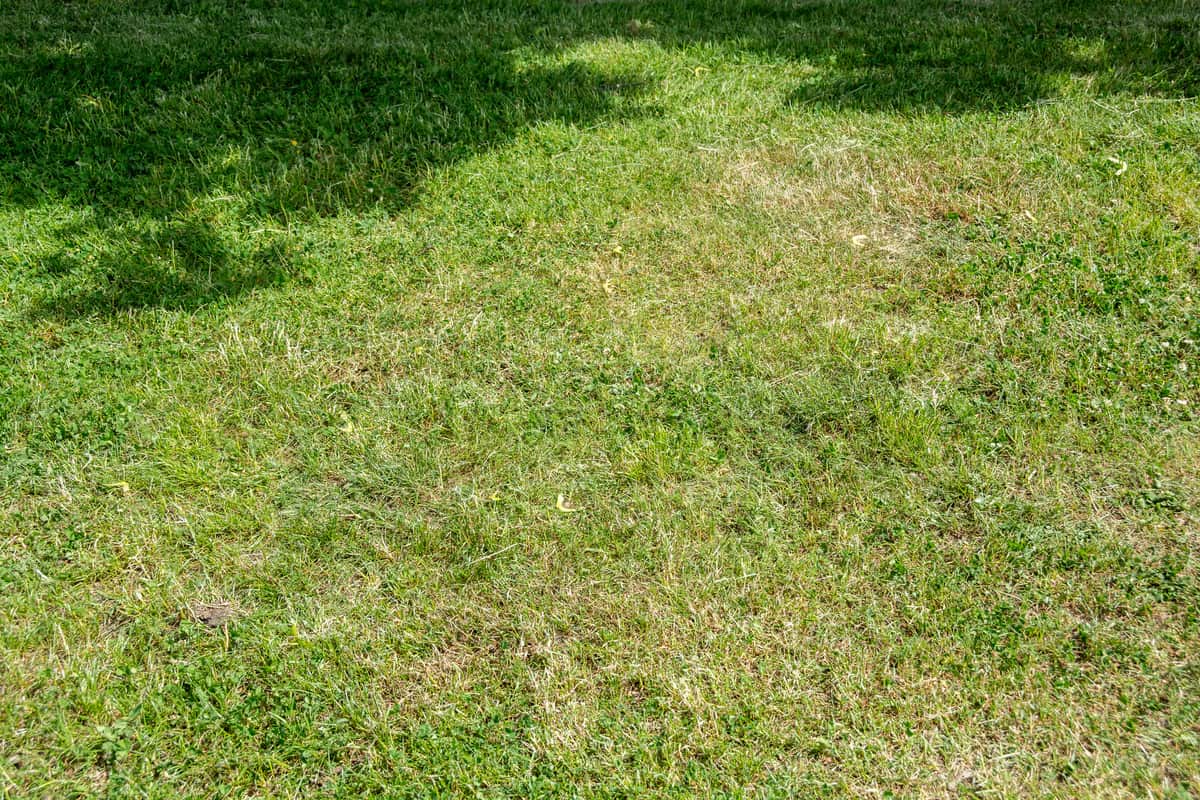
Your lawn turning white is a fixable problem! Grass discolored in this way is commonly caused by fungal disease or stress on the yard. Thankfully, you can easily solve these by using fungicides and improving the lawn's growing conditions!
Want more? Check out the posts below.
Why Is My Grass Dying In Patches?








